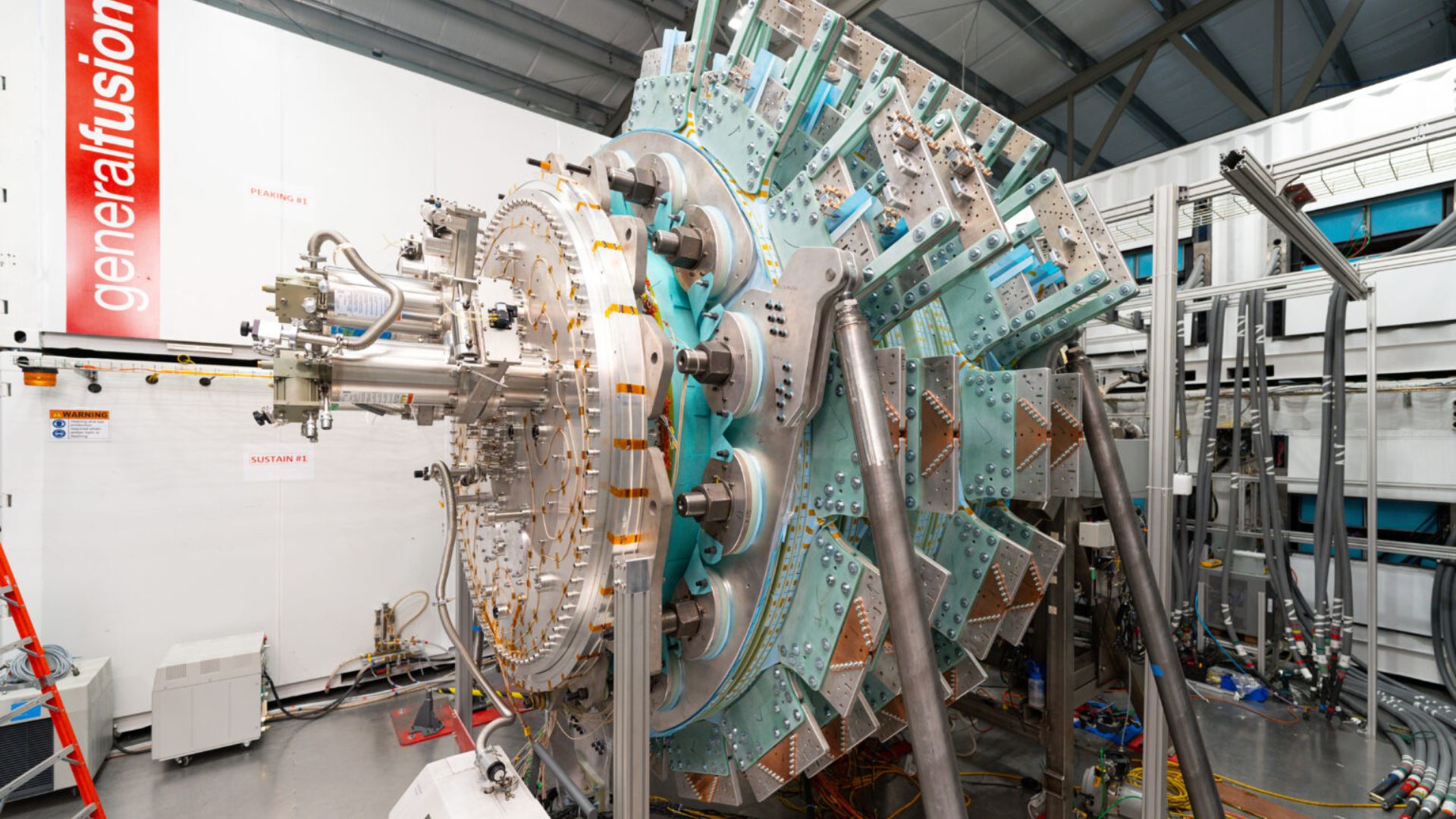
Canada-based nuclear fusion energy startup General Fusion has received a funding boost, which gives it a new lifeline to pursue its goal.
The company was going through a lean patch earlier this year, and this $22 million funding will help it continue on its path.
In May this year, situations had turned so bad that General Fusion’s CEO Greg Twinney had written an open letter asking for funds. The company even had to lay off many employees because of its dwindling finances.
Before this, the startup had activated the Lawson Machine 26 (LM26) – its half-scale prototype of a commercial-scale nuclear reactor.
Funding boost for General Fusion
In a press release, Twinney stated, “General Fusion has secured new funding to return to growth and continue to progress toward commercial fusion energy.”
He went on to mention that even during the tough times the company continued to advance its technology. He expressed the hope that the $22 million (C$30 million) funding boost will help General Fusion to come up with the desired results.
“With renewed Board leadership and fresh momentum, we’re better positioned to drive our unique technology forward and continue to secure funding. Thanks to our deeply committed investors and strong network of strategic partners, the pieces are in place,” Twinney writes in the press release.
Investors in this round include Segra Capital, PenderFund (via Pender Growth Fund Inc.), among others.
With this funding round, the company has also appointed two new members to its Board of Directors.
LM26 for nuclear fusion
General Fusion has taken the path of magnetized target fusion (MTF) and is expected to reach scientific breakeven by 2026. Scientific breakeven means a point where the net energy generated from a nuclear fusion reaction equals the energy needed to start the reaction.
In the most recent press release, the company says it is still following that path, although it didn’t provide a clear timeline. It says the company will pursue intermediary milestones of 1 keV and 10 keV before it reaches the equivalent of a scientific breakeven.
The LM26 will use deuterium fuel and electromagnetic compression of a solid lithium liner.
Inside the nuclear reactor, electricity will flow through the heavy hydrogen isotopes. A magnetic field will be generated to contain the plasma, which is then compressed by a liquid lithium wall pressed inwards by steam-driven pistons. The combined actions would hopefully result in the plasma and pressure inside becoming high enough to start a fusion reaction.
The startup aims to bring commercial fusion energy to the grid by the 2030s. The LM26 is being constructed in Richmond. The company hopes it will help them shorten the technical path from their next near-commercial machine to a commercial plant.
The company says that the data gathered from LM26 will be incorporated into the design of the next planned near-commercial machine in the UK.
As per the press release, the company will seek more funds in the days ahead to continue its operations and reach its goal.
0 comments:
Ikutan Komentar